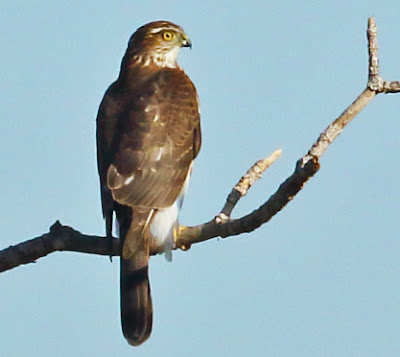But first -- As I was driving (well ok, more like crawling; look at that traffic) down the 405 freeway the other day, on my way to have dinner in "The OC" with other Lance trailer/camper owners, I saw this fellow on a tricked-out-Xmas-wise motorcycle...Only in So Cal can a holiday be applied to our means of transportation in what may be thought of as a gaudy manner --
Though it's considered to be a highly developed suburb, the Palos Verdes Peninsula still has pockets of open space and areas where the natural vegetation has been restored to look somewhat like it did over a hundred years ago, before all the development. One of those areas in George F Canyon, which has a "perennial" stream running through it -- I put that in quotation marks because I haven't seen any flowing water in it for months, probably due to the ongoing drought. But there is still riparian flora there, and it's quite lush -- willows and lots more that I can't ID as I'm still botanically-challenged -- but living now in Portal, I'm slowly learning! If you're interested in birds, it's a big help to know the plants, shrubs, trees, etc that you're seeing as, say, certain birds are attracted to certain shrubs. For instance, this Blue-gray Gnatcatchers flits among sagebrush and other similar flora,, looking for, well, gnats and other small insects --
And it's fanning its tail to attract those bugs; the sudden, flickering movement is supposed to do it. Similar behavior can be seen in, say, Painted Redstarts down in SE Arizona.
I've gone to Averill Park in my former home town of San Pedro for years. It used to be popular for its "crawdads", with kids using branches and string to fish for them, but they haven't been seen there for years now. The current inhabitants are Mallards and feral geese, and the people living in the area feed them mostly with bread, which is actually not healthy for them, and birds in general, as bread is a source of carbohydrates and, and is a type of "junk food" to them. Duckling malnutrition, overcrowding, pollution from the uneaten bread, diseases, are good reasons not to feed the birds. But, humans being humans, and thinking they're doing a good thing feeding the ducks, they'll keep right on doing it. OK, enough of that small rant. Sometimes there are "good" birds at Averill Park, and photo-ops are somewhat unique as, since the "creek" in the park is narrow, you can get closeups of the birds. Black-crowned Night Herons frequent it, and Belted Kingfisher, Green-winged Teal (a male spent the winter there) and Green Heron are sometimes seen there. And also Snowy Egrets on occasion, such as the other day --
I even got good looks at one of the ways Snowys use to attract its prey -- moving its feet around in the water, to stir up what's there. Hey, birds aren't "bird brains", that's for sure. Black Phoebes are residents at the park, and always provide flycatching entertainment, sallying out from a branch --
Yellow-Rumped Warblers are seen all over the place as they move in for winter. They can be quite pretty in their plumage; here's an "Audubon's" Warbler. Myrtle Yellow-rumpeds, a much more uncommon form of Yellow-rumpeds, have a white throat. BTW, the nickname for Yellow-rumpeds is "Butter Butt" (think of it as another term for "Yellow-rumpeds", as they have a rear yellow patch) --

I've been noticing more Fox Sparrows than usual in the area --
And the area also gets wintering Golden-crowned Sparrows --
Allen's hummingbirds are "residents" on the Palos Verdes Peninsula, meaning they're here all year long and don't migrate. Here's a brightly colored, glittery male --
That's one of the things that makes birding so fun -- you never know what you might find. Usually it's just the usual suspects, but sometimes there's the odd rarity that makes all the being out in the field worthwhile.













No comments:
Post a Comment